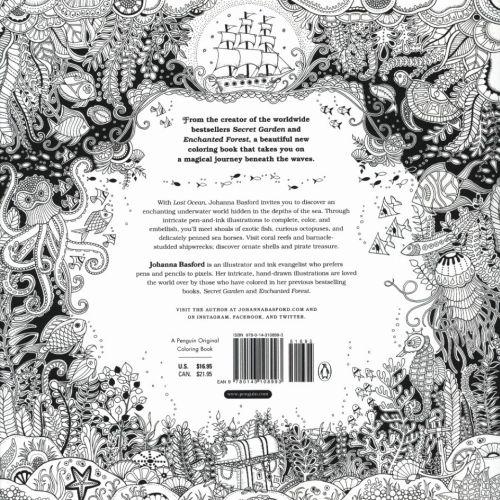The Hidden World of Sea Pens: A Forest Under the Sea
Have you ever imagined a forest existing under the sea, teeming with life and vibrant colors? While we often associate forests with towering trees on land, there is a hidden world beneath the ocean’s surface that resembles a mystical underwater forest — the world of sea pens.
Unveiling the Sea Pen Ecosystem (H2)
¡Bienvenidos a la Selva Marina! (Welcome to the Marine Jungle!)
Sea pens, scientifically known as Pennatulacea, are marine organisms that belong to the order Pennatulacea within the class Anthozoa. Unlike the static image of a traditional forest, these creatures are soft corals with a unique, feathery appearance. Picture slender stalks resembling quills or feathers that collectively form a mesmerizing colony. Found in various depths across oceans worldwide, sea pens create a breathtaking spectacle that is often overlooked.
These remarkable organisms anchor themselves into the sandy ocean floor using a bulbous base, while the above-ground structures, or “pennules,” capture plankton and other tiny organisms for sustenance. Their vibrant colors, ranging from soft pinks to vivid oranges, make sea pens not only intriguing but also visually stunning.
Biodiversity Below the Waves (H3)
La Diversidad Oculta en las Profundidades (The Hidden Diversity in the Depths)
One of the most fascinating aspects of sea pens is the incredible biodiversity they harbor. The spaces between their feathery arms provide shelter for a myriad of marine life, from tiny shrimp seeking refuge to juvenile fish navigating the challenges of ocean life. It’s like a bustling city beneath the waves, where every nook and cranny serves a unique purpose in sustaining the delicate balance of the marine ecosystem.
Moreover, the colors of sea pens are not just for show. Each hue can attract specific types of microorganisms, creating a symbiotic relationship between the sea pens and the surrounding environment. This intricate dance of colors and life forms adds another layer of complexity to the already awe-inspiring marine landscape.
Threats to the Sea Pen Paradise (H3)
Desafíos que Enfrentan los Bosques Submarinos (Challenges Faced by Underwater Forests)
Despite their enchanting presence, sea pens face various threats that endanger their existence. Human activities such as bottom trawling, a method of fishing that involves dragging large nets along the ocean floor, can cause severe damage to sea pen colonies. The delicate nature of these organisms makes them susceptible to disturbances, and their slow growth rate means recovery can take years, if not decades.
Climate change also poses a significant threat, as rising sea temperatures and ocean acidification can negatively impact the health of sea pens and the entire marine ecosystem they support. Conservation efforts are crucial to ensure the preservation of these hidden wonders and the biodiversity they sustain.
Conservation Initiatives and Hope for the Future (H3)
Iniciativas de Conservación y Esperanza para el Futuro (Conservation Initiatives and Hope for the Future)
Fortunately, there is hope for the sea pen paradise. Conservation organizations and marine biologists are actively working to raise awareness about the importance of preserving these underwater forests. Establishing marine protected areas, where human activities are restricted, can play a crucial role in safeguarding sea pen colonies and allowing them to thrive.
Additionally, ongoing research aims to better understand the biology and ecology of sea pens, enabling more effective conservation strategies. By combining scientific knowledge with public engagement, we can ensure that future generations have the opportunity to marvel at the beauty of sea pens and the diverse life they support.
Frequently Asked Questions (FAQs)
1. ¿Son las plumas de mar peligrosas para los humanos? (Are sea pens dangerous to humans?)
While sea pens are not inherently dangerous to humans, it’s essential to treat them with respect. Some species of sea pens can produce toxins for self-defense, but these are typically not harmful to humans. It’s advised to admire these underwater wonders from a distance to avoid disturbing their delicate ecosystems.
2. ¿Cómo puedo contribuir a la conservación de los bosques submarinos? (How can I contribute to the conservation of underwater forests?)
Contributing to the conservation of underwater forests, including sea pens, can be done through various means. Supporting marine conservation organizations, practicing responsible tourism, and raising awareness about the importance of protecting marine ecosystems are effective ways to make a positive impact. Every small action collectively contributes to the preservation of these hidden treasures.
3. ¿Dónde puedo presenciar la belleza de las plumas de mar? (Where can I witness the beauty of sea pens?)
Sea pens can be found in various oceans around the world, typically in sandy or muddy substrates. Popular diving and snorkeling destinations with diverse marine life, such as the Great Barrier Reef, Indonesia, and the Red Sea, offer opportunities to witness the beauty of sea pens. However, it’s essential to choose responsible tour operators and follow sustainable diving practices to minimize the impact on these delicate ecosystems.

